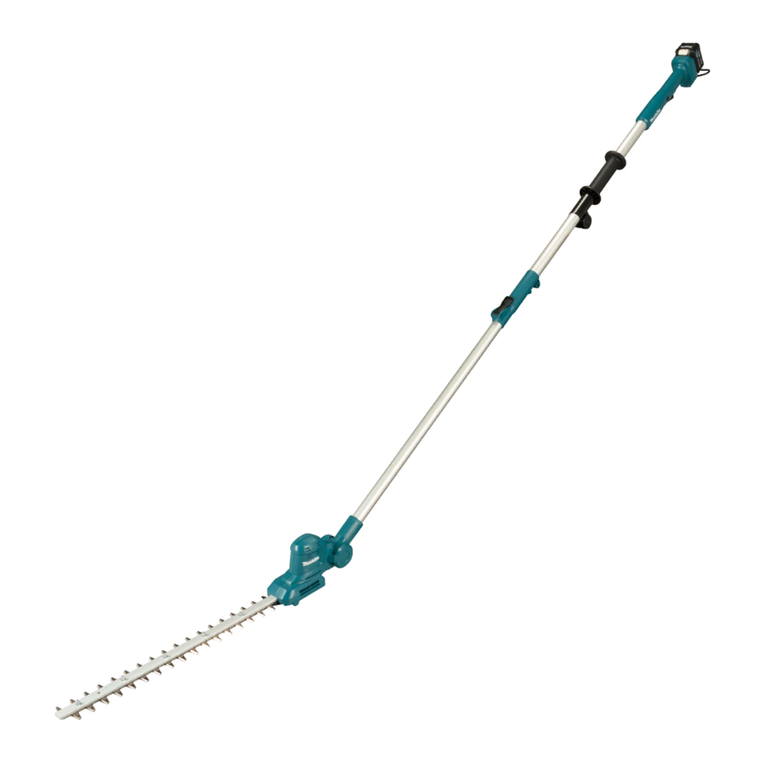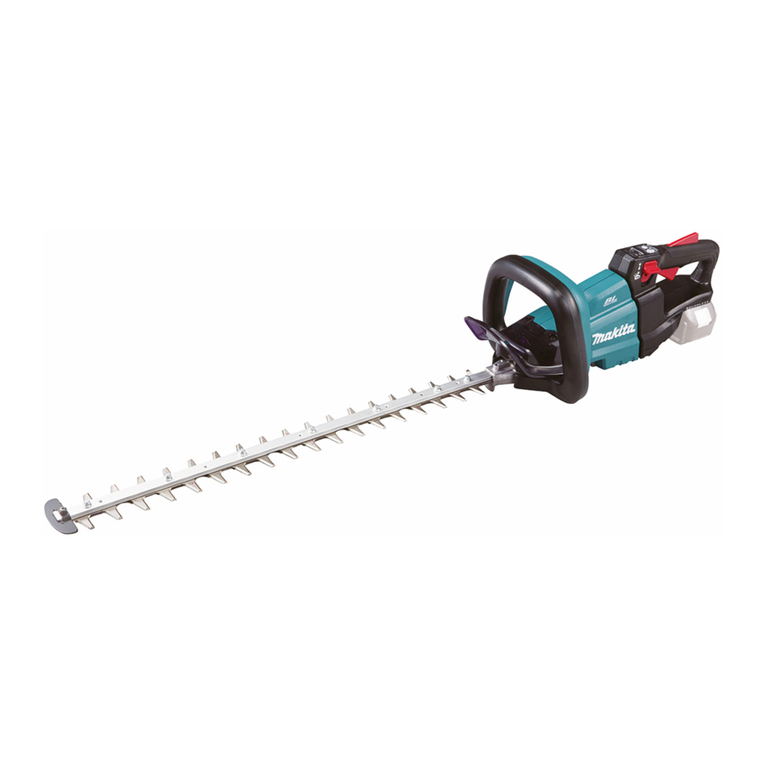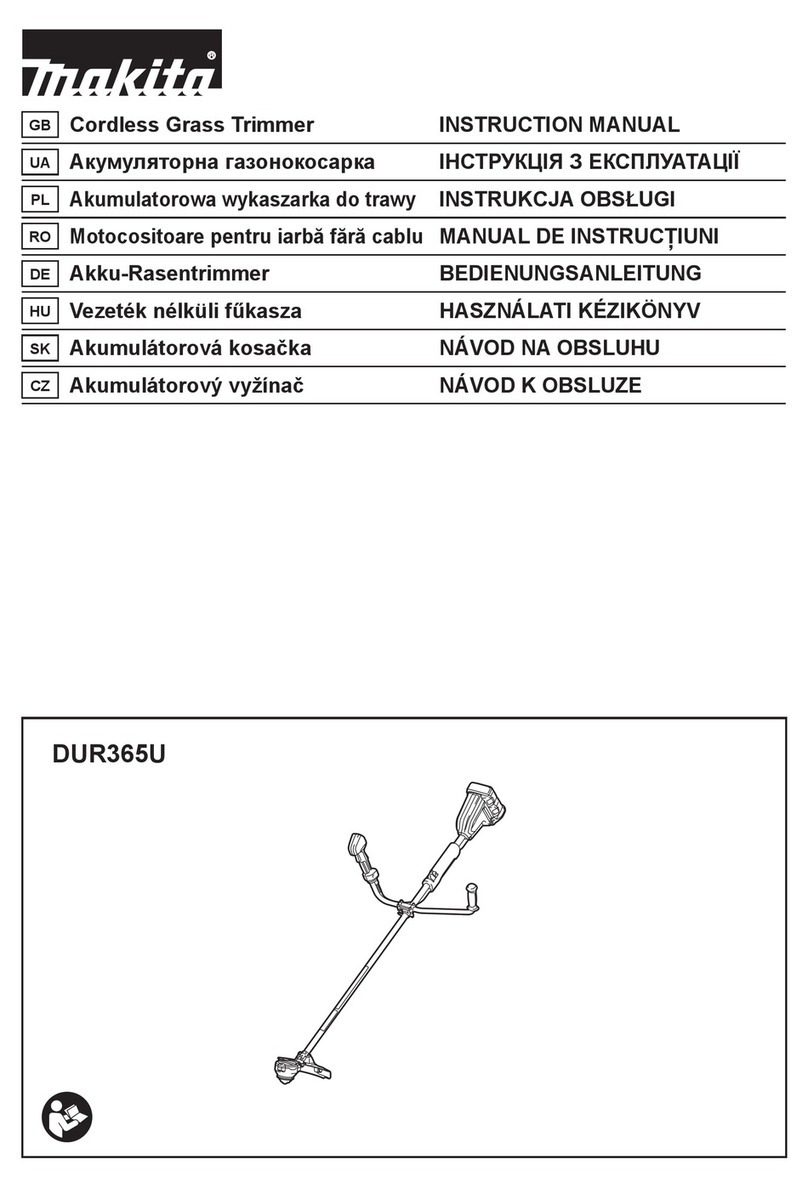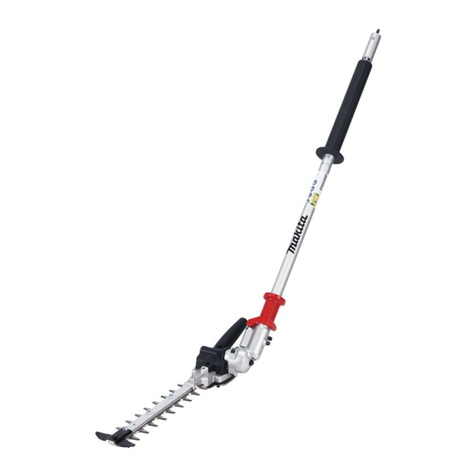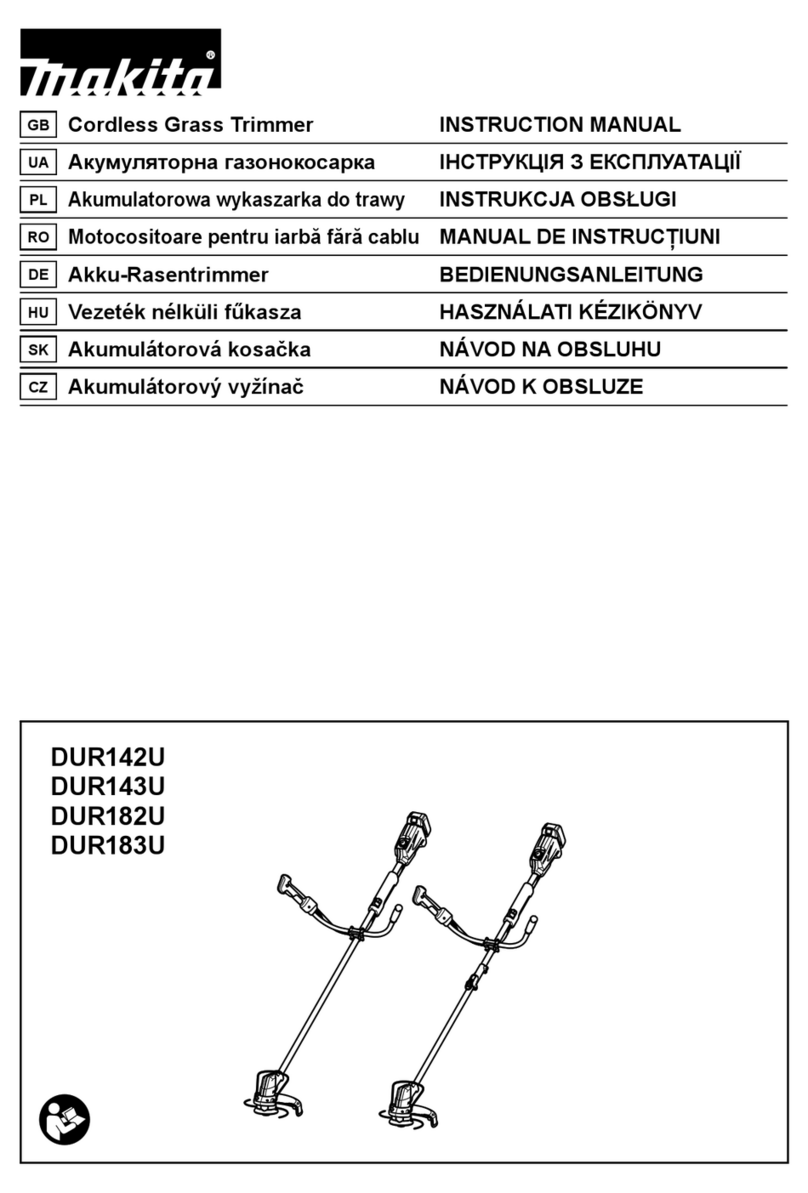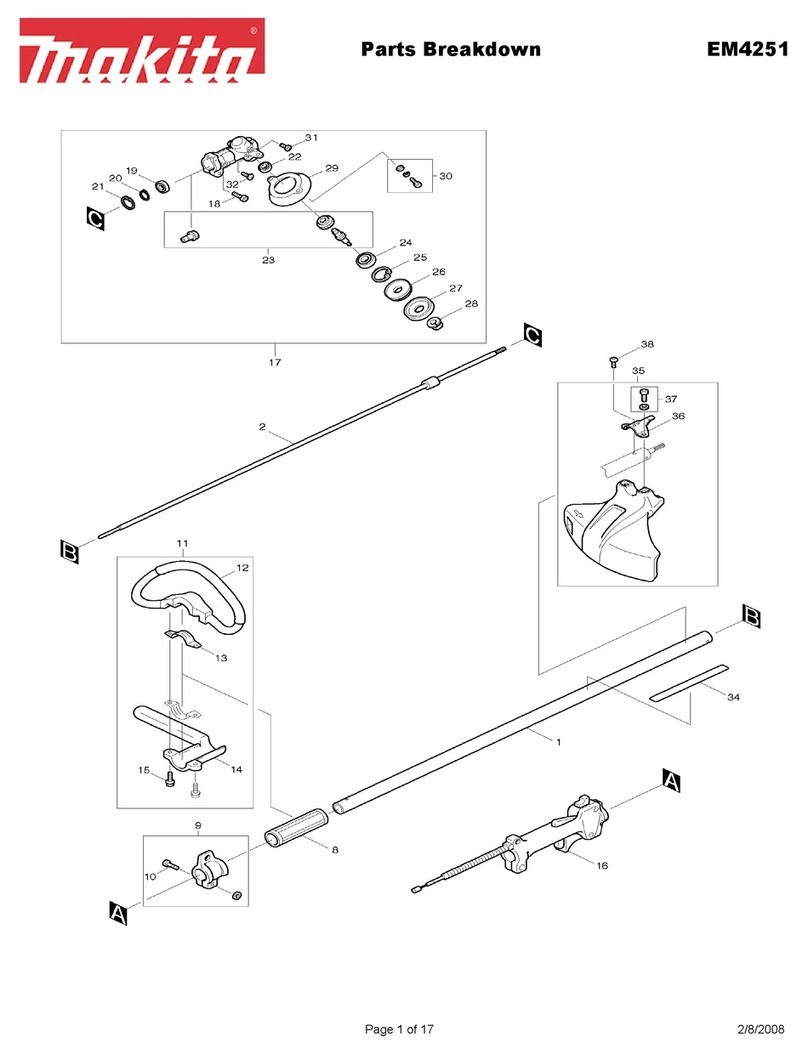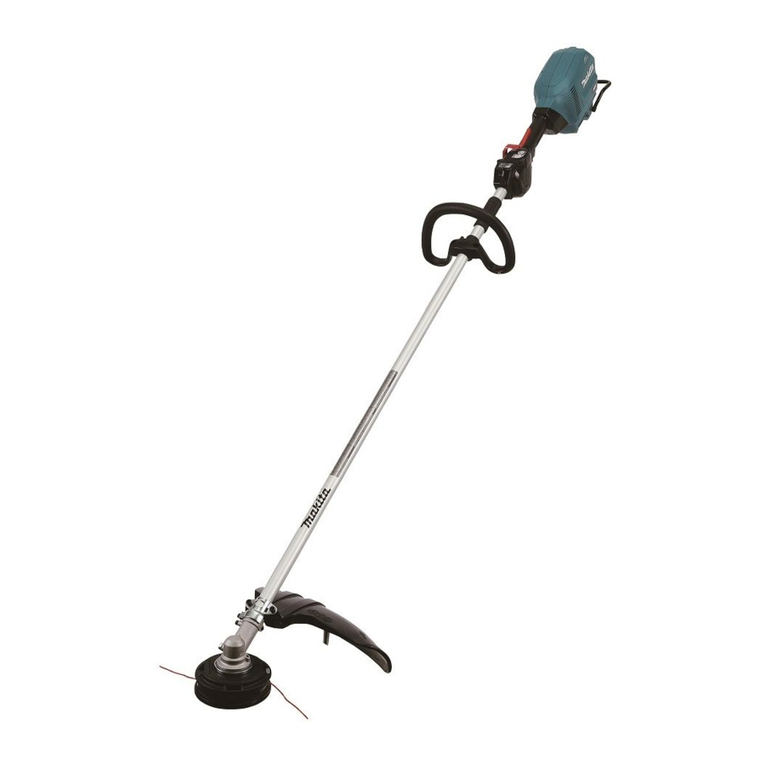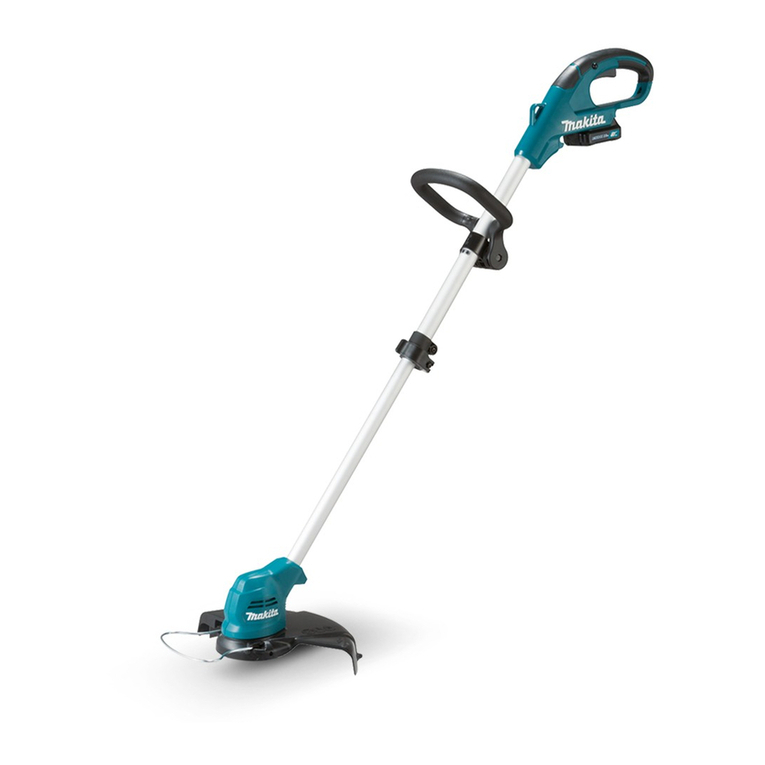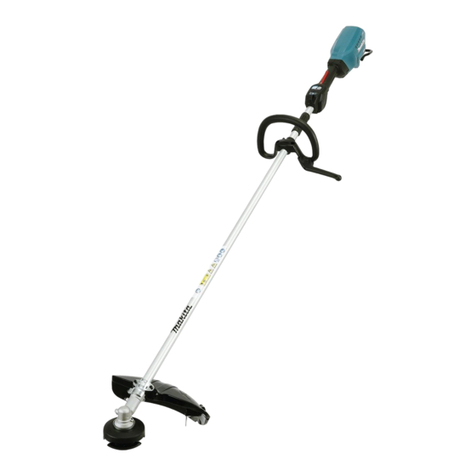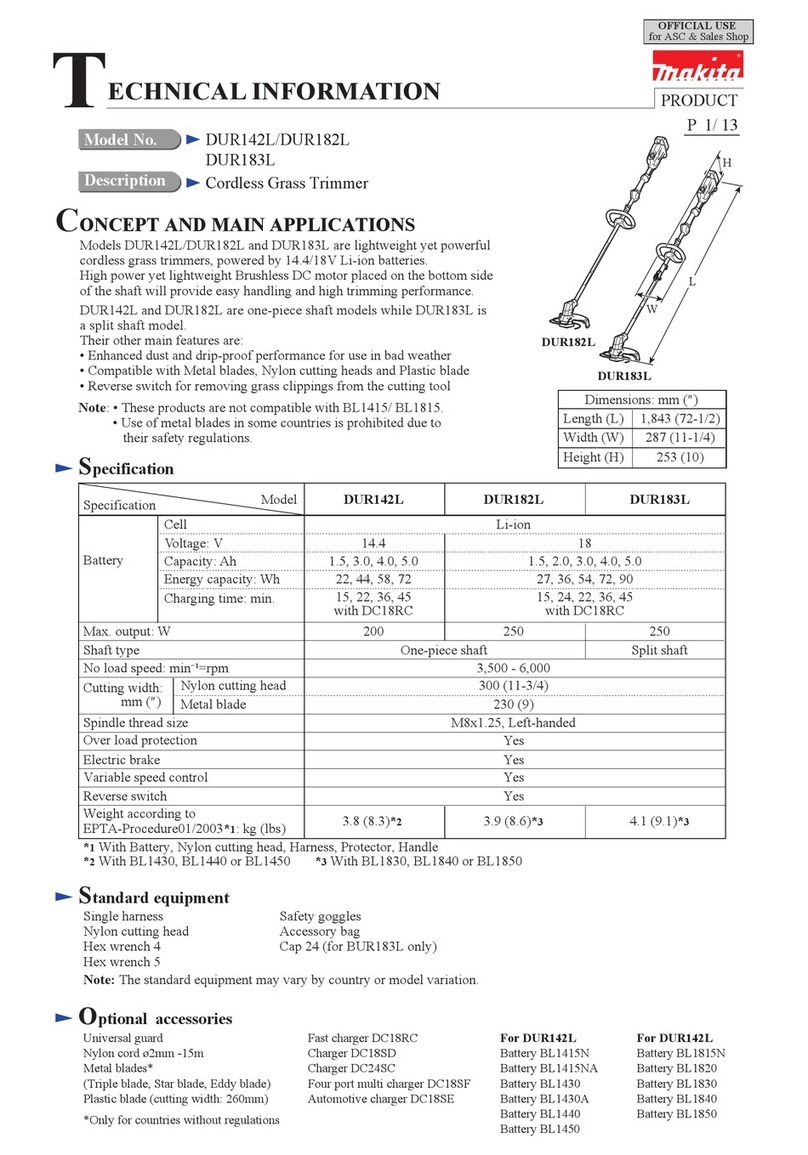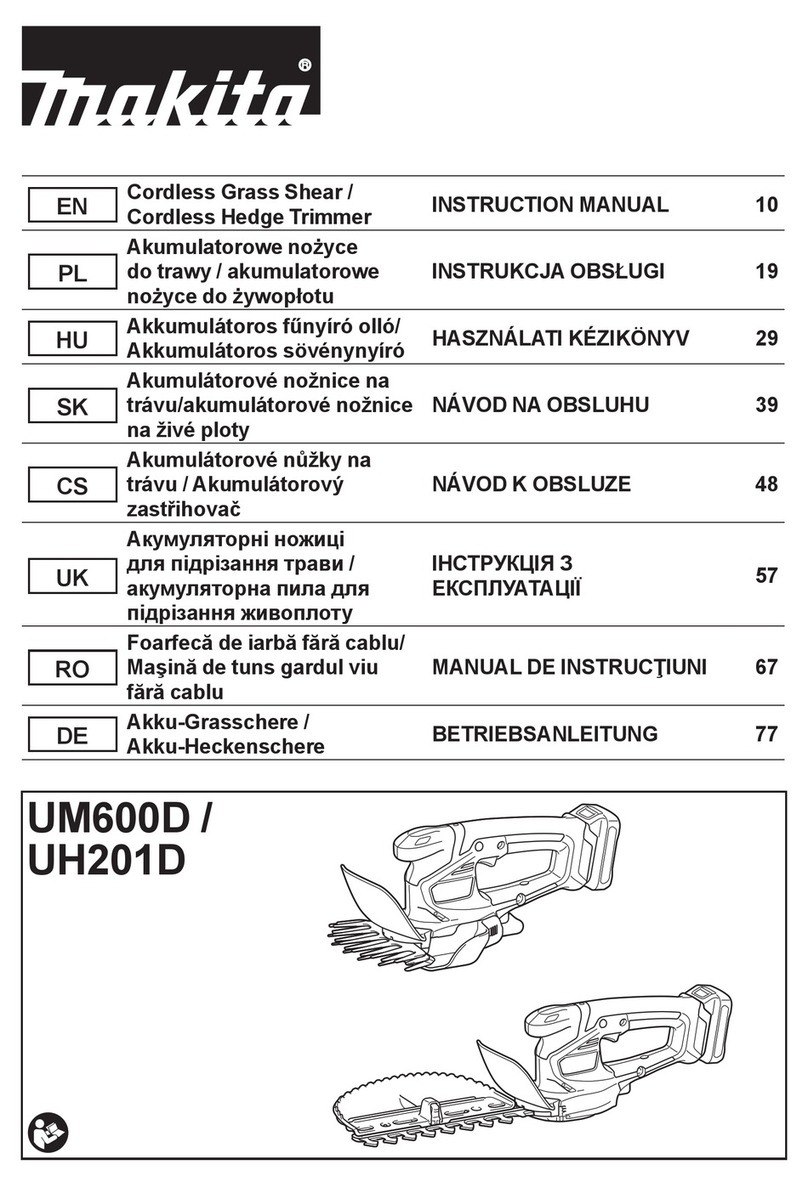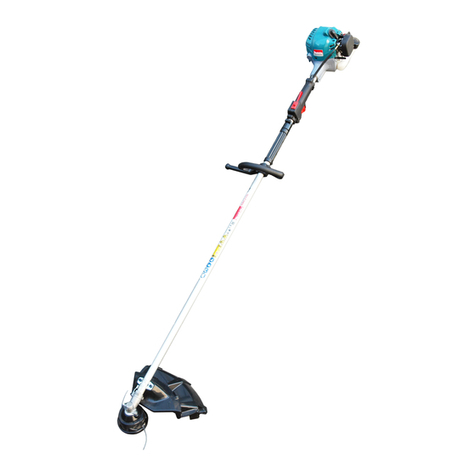
- 4 -
MOREOVER MAKE SURE...
Moreover make sure to be well equipped with
proper cloths and protection means before
starting to work.
In particular:
Clothes: use tight overalls (avoid wearing
large shirts or unbuttoned clothes). Avoid jew-
elry, rings, various objects like ties, scarves
or similar that could be kept by the branches
of the hedges or by the moving parts of the
machine.
Comb your hair so that its length is over the
shoulders.
Wear closed work shoes or high boots with
anti-slip sole allowing you a perfect stability
on the ground (avoid being barefoot, wearing
slippers or open low shoes).
Put on the protection helmet whenever there
is the risk of contact with objects that fall
down during the cleaning of the brushes or
when the brushwoods are at man’s height.
For an efficacious protection of your face
and eyes, the visor and/or the anti-misting
goggles are absolutely necessary: wear them
always!
Protect your hearing too with noise absorb-
ing earphones or auricular plugs. Always use
work gloves resistant to small pushes or cuts
which could be caused above all by the use of
blades, knives or sharp parts.
ASSEMBLY
Before starting to work make sure the follow-
ing parts are well assembled:
a) Place the front handle on the bars, then fix
it by the relative screws/nuts (Fig.1)
b) Make sure clutch drum freely turns when
you accelerate and stays blocked when you
dont accelerate, otherwise adjust the brake
by acting on the relative nuts. (Fig.2-3)
c) Then connect the blades group to the
engine and block by the four screws (Fig.4-
5)
Connection of gas control cable for hed-
getrimmer (fig. 6) The ends of the gas control
cable must be connected to the carburetor by
screwing in the thread bolt.
Now insert the end of the cable in the revolv-
ing pawl of the butterfly valve control.
Adjust the bolt so that you eliminate the pos-
sible clearances between cable and protec-
tive covering in order to obtain a correct and
progressive acceleration.
This bolt is a safety feature and it is used to
keep the machine from an unintentional accel-
eration due to possible holds.
Now connect the eyelet timble of the mass
cable to one of the four clamping screws
which fasten the clutch drum to the engine
and connect the female coupling of the mass
cable to the tap coupling coming out from the
coil (fig. 7).
ASSICURATEVI INOLTRE....
Assicuratevi inoltre di essere bene attrezzati
con idoneo vestiario ed adeguati strumenti di
protezione prima d’iniziare ad operare.
In particolare:
Indumenti: usate tute di lavoro aderenti
(evitate di indossare camicioni o indumenti
slacciati). Evitate gioielli, anelli, oggetti vari
come cravatte, o simili che potrebbero essere
trattenuti dai rami delle siepi o dalle parti in
movimento della macchina.
Acconciatevi i capelli in modo tale che la loro
lunghezza sia sopra la spalla.
Calzate scarpe da lavoro chiuse o stivali alti
dotati di suola antisdrucciolo, che vi consen-
tano una perfetta stabilità sul terreno (evitate
di essere scalzi, d’indossare ciabatte o scarpe
aperte basse).
Mettetevi il casco protettivo ogni qualvolta
esista il rischio di contatto con oggetti che
cadono durante i lavori di pulitura di ramaglie
o in presenza di sterpaglie ad altezza d’uomo.
Sono inoltre indispensabili, per una efficace
protezione del viso e degli occhi, la visie-
ra e/o gli occhiali antiappannanti; portateli
sempre!
Proteggetevi anche l’udito mediante l’uso di
cuffie antirumore o tappi auricolari.
Usate sempre guanti da lavoro resistenti ai
piccoli urti o tagli soprattutto causabili dal
maneggio di lame, coltelli, o parti taglienti.
ASSEMBLAGGIO
Prima d’iniziare a lavorare, assicuratevi che
tutte le parti seguenti siano montate corret-
tamente;
a) Posizionate l’impugnatura frontale sulle
barre: fissatela poi con le relative viti/dadi
(Fig. 1).
b) Assicuratevi che la campana frizione giri
liberamente quando si stà accelerando,
e sia bloccata quando non si sta accele-
rando, in caso contrario regolare il freno
agendo sui relativi dadi (Fig. 2-3).
c) Collegate il gruppo lame al motore e bloc-
cate con le quattro viti (Fig. 4) e bloccate
con le 4 viti (Fig. 5).
Collegamento cavo comando gas: (Fig 6)
L’estremità del cavo comando gas deve essere
collegata al carburatore avvitando il regi-
stro filettato. A questo punto dovete inserire
l’estremità del cavo nel nottolino girevole
comando valvola a farfalla. Regolate ora il
registro in modo da annullare gli eventuali
giochi tra cavo e guaina al fine di avere una
corretta e progressiva accelerazione. Questo
registro è una sicurezza, e impedisce l’ac-
celerazione involontaria o accidentale della
macchina a seguito di eventuali appigli.
Collegate ora il capocorda ad occhiello del
cavo-massa ad una delle quattro viti fissaggio
supporto campana frizione/motore e innestate
il fastom femmina, del cavo massa, al fastom
maschio proveniente dalla bobina. (Fig 7)
Fig. 4
Fig. 3
Fig. 2
Fig. 1

